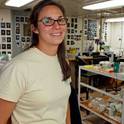
- East Pacific Rise,
- Diffuse-flow vents,
- Larval dispersal
The discovery of a seafloor eruption at the East Pacific Rise (EPR ) in 1991 presented an opportunity to examine the colonization and assembly of macrofaunal communities at newly formed diffuse-flow vents as well as to document the changes in community composition (Shank et al., 1998) in the context of temperature variation (Scheirer et al., 2006) and fluid chemistry (Von Damm and Lilley, 2004). The eruption site became a focus of the Ridge 2000 EPR Integrated Study Site (ISS) established to facilitate studies of the interaction of biological, geochemical, and/or physical processes associated with seafloor spreading. A second seafloor eruption in 2005–2006 provided opportunities to not only observe changes in community composition and environmental conditions, but also to deploy colonization substrata and other specialized equipment from “time zero.” Here we focus on how larval dispersal and recruitment contribute to the establishment of hydrothermal vent communities.
